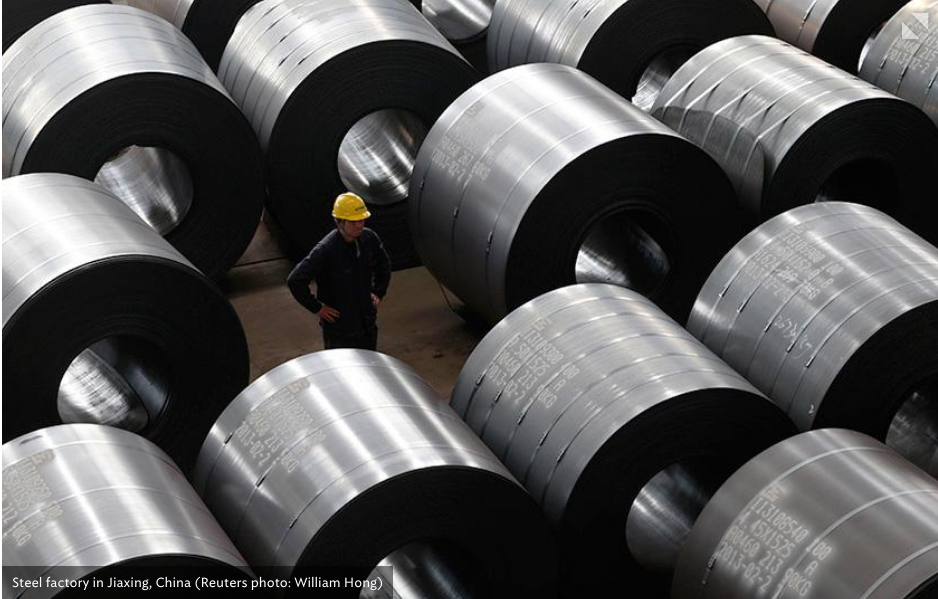Markets only respond to government decisions — good and bad — about the goods and workers crossing our borders. Critics of free-market capitalism often point to the fact that the average American worker hasn’t gotten a raise in decades as evidence that free markets have failed. Yet free-market capitalism hasn’t failed.
It has only efficiently responded to signals that government has sent it by opening our borders to tens of millions of unskilled laborers as well as to products manufactured in countries that do not respect free-market capitalism. The average American worker has seen his income stall. Thirty years ago, a household whose high-school-educated breadwinner managed to earn 40 percent of the average American income brought home about $41,000. Today, he still earns $41,000. The phenomenon is global: “across 25 of the world’s advanced economies, about two-thirds of the population — more than half a billion people — earn the same or less than their peers did a decade ago,” the Wall Street Journal reported in July.
Workers’ stagnant pay is in part a success story: that the situation not worse is a testament to Western economies’ ability to absorb nations’ worth of people. As Ed Conard, a founding partner of Bain Capital, says of the theme of his new book, The Upside of Inequality: “America has sucked a huge number of workers in. We have people walking around saying there’s no demand for labor. That’s why I think the free markets are working. Something is bringing people from Guatemala” to New York, he says, looking for work.
Conard cites the numbers. “We have absorbed 40 million foreign-born adults, 20 million [adult] children” of immigrants. “We have a near-infinite supply of low-wage labor,” so “we’re not going to get an increase of wages.” The government, not the marketplace, decreed that America would accept these low-skilled workers — and the marketplace responded by lowering wages. People may not like this market signal. But the market is responding to a public-policy decision.
Lower-wage workers in the West have also suffered from competition from people who have stayed in the developing world to make products for export. One can hardly call trade with China, for example, free-market trade. The Chinese government has explicitly supported its state-owned and state-favored enterprises in its push to increase exports, to create jobs for hundreds of millions of working-age people at home. As the country’s economic growth has slowed over the past two decades, China’s Communist party leaders, panicked about unemployed people fomenting unrest, have opted to expand the government’s economic footprint rather than let market forces work. “China is retreating from market-orientated reforms in order to pursue old-fashioned Soviet-style central economy planning,” Jingzhou Tao, managing partner of China-based global law firm Dechert, writes in the Financial Times. China now has more corporate debt, as a percentage of GDP, than any other country — because China has encouraged state-supported banks to lend to job creators.
To wit: China is coddling firms in the steel industry as they struggle with over-capacity. Dongbei Special Steel group is a state-owned steel producer that is producing far more steel than anyone wants to buy, the Wall Street Journal reports. The company cannot pay its debts. But the Chinese government hasn’t forced it into bankruptcy or restructuring; the government needs the 10,000 jobs the company has created. Another state-owned steel firm, Bohai, is restructuring its debt only with the help of new debt guaranteed by the coastal city of Tianjin, where local leaders were willing to put up the money rather than face mounting job losses, the Financial Times reports. U.S. and European markets — and their mill workers — must absorb steel produced not under free-market conditions but under central-planning conditions.
Some folks aren’t worried. “If China wishes to subsidize its exports, good for us who buy them,” says Deirdre McCloskey, a former University of Illinois professor and author of the new book, Bourgeois Equality. Tyler Cowen of George Mason University isn’t so sure. “I’m not just sitting back saying, ooh, cheaper steel,” he says. He notes that China itself will likely bear “98 percent” of the costs of its government distortions, and “it’s not that you want China to be poor again.” But manufacturing output from the “non-free world just in total mass has grown a large amount,” and has affected Western economies, and, in turn, public support of free-market capitalism there. “Once you lose certain things, it’s hard to buy them back,” he says.
Conard, although a free trader, acknowledges that laid-off workers and workers earning lower wages are rational to be upset. “A lot of people are benefiting from the lower cost of goods,” he says, “but not really paying the cost of the lower wages. I take my factory from Indiana and we cart it down to Mexico,” he continues, and the classic argument is that re-trained Hoosier workers can find new jobs created by entrepreneurs. But the most skilled workers “move to San Francisco, and the guy in Indiana is walking around,” asking, “when are the entrepreneurs going to show up?”
Source: Nicole Gelinas, nationalreview.com
 Listen Online
Listen Online Watch Online
Watch Online Find a Station in Your Area
Find a Station in Your Area









 Listen Now
Listen Now Watch Online
Watch Online
